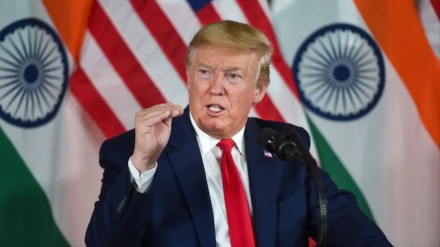As Donald Trump prepares to be formally sworn in as the 47th President of the United States on Monday (January 20), prominent diplomats and experts foresee a significant boost in India-US relations. They emphasise that the growing challenge posed by China will likely push the two nations toward deeper collaboration across a wide range of sectors.
Predicting a rise in bilateral trade and investment, Mukesh Aghi, President and CEO of the US-India Strategic Partnership Forum, pitched for accelerating negotiations for a bilateral Free Trade Agreement (FTA) and termed it as an important strategic priority. India should “take a very proactive role” in driving this process forward and leverage its position within the Quad, Mr Aghi said at an interactive online conference, titled “The Trump Card: India’s Choices & Strategy” on January 15. “If you don’t want a direct trade agreement, let’s focus on doing an FTA between the four Quad countries and create a common market,” he said. He argued that this strategy would allow India to tap into the combined economic strength of the Quad, estimated at $35 trillion, creating a powerful bloc to drive mutual growth and resilience against external challenges.
The conference, organised by the Centre for Global India Insights, a leading think tank focused on global affairs and India Writes Network, explored the ramifications of the Trump presidency on various facets of the India-US strategic partnership. The speakers at the conference included: Amb. (Retd.) Kanwal Sibal, Chancellor JNU, former foreign secretary, India; Mukesh Aghi, President & CEO, US-India Strategic Partnership Forum (USISPF); Shalabh Kumar, Chicago-based US Industrialist and National Chair of Indian & Hindu American Coalitions for the Republican Party; Vivek Lall, Chief Executive, General Atomics Global Corporation; Michael Kugelman, South Asia Institute, Wilson Centre, US; and Dr Harinder Sekhon, Author & expert.
The conference was moderated by Manish Chand, CEO, Centre for Global India Insights (CGII). “While in some regions such as Europe and the Middle East and Latin America, the Trump anxiety is more pronounced, in India the US President-elect continues to enjoy a high degree of approval,” said Chand. “Given personal chemistry between Prime Minister Narendra Modi and President-elect Trump, one can expect the India-US strategic partnership to scale new heights under the Trump 2.0 presidency,” said Chand. “Trump will not only sustain the momentum in India-US relations but will also raise the bar as this crucial relationship is underpinned by a robust bipartisan consensus,” he said.
Along with a rise in trade and investment, Vivek Lal, Chief Executive, General Atomics Global Corporation, a leading US company that is manufacturing drones for India, also struck an upbeat note on the shape of India-US defence relations under Trump 2.0. “The US-India defence corridor will continue to grow,” he said while highlighting growing collaboration between defence start-ups in days to come. Arguing for the need for India and the US to have a real-time common operating picture, Lall said: “In the months and years ahead we will see a lot more integration in terms of systems to provide that common operating picture to like-minded allies.”
The China Factor
Shalabh Kumar, a Chicago-based Indian-American industrialist and a leading donor to the Trump campaign, focused on the deepening strategic rivalry with China, which he described as “an existential threat for both the US and India.” Highlighting China’s growing military and economic dominance, he warned that by 2049, China’s GDP could be “twice as big as America’s,” with its military surpassing the US in capability. Underlining that China’s growing influence across South Asia is as part of a broader plan to encircle India and expand its geopolitical reach, he described the US and India as “natural allies” in countering China’s rise. He argues that the strategic convergence of interests between India and the US in the Indo-Pacific was vital for maintaining a balance of power.
Arguing that “China’s long-term aspirations are very clear,” he stressed that only through a united front, anchored in a strong India-US relationship, could these ambitions be curtailed. He added, “Without bringing back manufacturing from China to the US and shifting the rest of it, which cannot be brought to the US, to allied countries like India, the Chinese dragon cannot be tamed.”
While acknowledging the strategic benefits of the US-India partnership in countering China’s rise, Sibal, a former foreign secretary, stressed the importance of India maintaining an independent foreign policy. He explained that India could not rely solely on the US in its dealings with China, particularly on territorial disputes. “We have to keep this dialogue with China open,” he emphasized, underscoring the need for diplomatic engagement even as India strengthened its ties with the US. He added, “The US was trying its best to deny China access to advanced technologies, which was helpful to India as it slowed China’s rise. But India had to be cautious in how far it aligned with the US’s anti-China policy, given China was its immediate neighbor and territorial issues lay outside US involvement.”
Kugelman predicted a continuity in the US Indo-Pacific strategy under Trump 2.0 and argued that it will align “with India’s own strategic interests in South Asia, particularly when it comes to the idea of working with partners to counter China and its growing presence and influence in the region.” The focus will be on trying to give countries better alternatives to what China is doing, he said.
